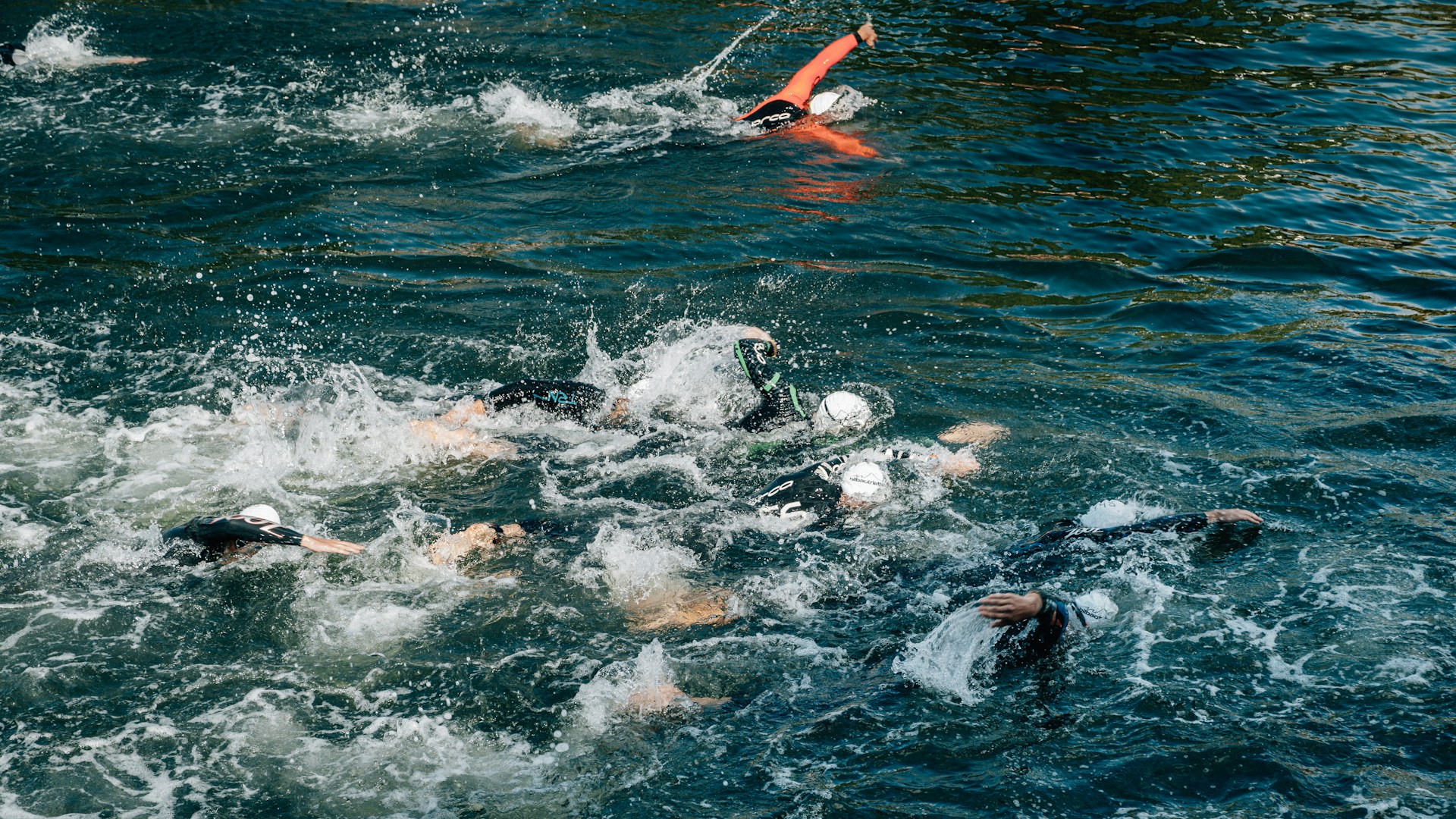The world of sports and athletics is a constantly evolving field, with new techniques, technologies, and strategies emerging regularly to optimize athletes’ performance. One such approach that has gained substantial traction in recent years is hypoxic training. Put simply, hypoxic training involves exercising in conditions with reduced oxygen levels, thereby simulating high-altitude environments. This method has been particularly effective for swimmers preparing for competitions at high altitudes.
According to numerous studies available on Google Scholar, Med, and PubMed, the benefits of hypoxic training for swimmers are numerous, ranging from improved oxygen utilization to enhanced endurance. This article will delve into the science behind hypoxic training and explore how it can be incorporated into a training regimen for swimmers.
A lire en complément : What’s the Best Technique for Practicing Corner Kicks in Windy Conditions for Soccer Players?
Understanding Hypoxia and Its Role in Training
Hypoxia, derived from the Greek words for ‘less’ (hypo) and ‘oxygen’ (oxia), refers to the condition wherein the body or a part of it is deprived of adequate oxygen supply. It’s a state naturally experienced at high altitudes where oxygen levels are lower.
In the realm of sports training, hypoxia is intentionally induced to prepare athletes for high-altitude competitions or to improve their overall performance. This is done either by training in high-altitude environments or using special equipment that simulates these conditions.
Sujet a lire : How Can Custom-Molded Earpieces Improve Communication in Water Polo Team Tactics?
According to a study published in the Journal of Applied Physiology (Physiol), hypoxic training can enhance the body’s ability to transport and utilize oxygen, leading to significant improvements in endurance and performance.
Incorporating Hypoxic Training into a Swim Training Program
Typically, athletes live and train at high altitudes for the benefits of hypoxic training. However, given the logistical challenges associated with high-altitude living, many turn to alternative methods. These include using hypoxic tents or masks, and even training in specially designed pools where oxygen levels can be controlled.
However, introducing hypoxic training into a swim program must be done strategically. The intensity of training sessions, the duration of hypoxic exposure, and individual athlete response must all be considered. Overexposure to hypoxia may lead to detrimental effects such as impaired immune function and decreased muscle mass.
The Science behind Hypoxic Training and Performance Enhancement
In response to hypoxia, the body undergoes several physiological adjustments to maximize oxygen delivery to the tissues. These adaptations occur over time, and are believed to contribute to improved athletic performance.
One key response is an increase in the production of a hormone called erythropoietin (EPO). EPO stimulates the production of red blood cells, enhancing the body’s oxygen-carrying capacity. A study referred through sci-hub reported that athletes who underwent hypoxic training showed an increase in their EPO levels and subsequently, their red blood cell count.
Another significant adaptation is the increase in the number and size of mitochondria, the energy-producing structures in our cells. This enhances the muscles’ ability to utilize oxygen and produce energy, leading to improved endurance.
Hypoxic Training: A Tool for Preparing for High Altitude Competitions
Hypoxic training can serve as a valuable tool for swimmers preparing for high altitude competitions. By training under controlled hypoxic conditions, they can acclimate their bodies to the lower oxygen levels they will encounter during the event.
In a study available on Google Scholar, swimmers who underwent hypoxic training before a high-altitude competition outperformed their counterparts who did not. Their bodies were better prepared for the low-oxygen environment, resulting in improved performance.
Potential Risks and Considerations
Despite the apparent benefits, hypoxic training is not without risks. Overexposure to hypoxic conditions can lead to altitude sickness, characterized by symptoms such as headache, nausea, and fatigue. More severe cases can result in high altitude pulmonary edema (HAPE) or high altitude cerebral edema (HACE), both of which can be life-threatening.
Therefore, it is important for athletes and coaches to approach hypoxic training with caution, ensuring that the methods used are safe and appropriate for the individual athlete. Monitoring tools can be used to track vital signs and physiological responses during hypoxic training sessions, allowing for adjustments as necessary.
The Impact of Living High-Training Low (LHTL) on Sea Level Performance
Living High-Training Low (LHTL) has been advocated as an effective approach to hypoxic training. The idea behind this method is that athletes would live in hypoxic conditions to stimulate physiological adaptations, such as an increase in red blood cell count, but would train at lower altitudes or sea level, where they can maintain high-intensity training sessions.
This approach has been shown to be effective in enhancing performance at sea level. In a study available on Google Scholar, athletes who followed the LHTL approach showed improvement in their sea level performance. It was suggested that the increased red blood cell count led to better oxygen transport during intense exercise, enhancing their performance.
However, the LHTL method is not without its challenges. Maintaining a home and training regimen at different altitudes can be logistically complicated. Moreover, the optimal altitude for living and training has yet to be established, as responses to hypoxia can vary among individuals. Thus, it’s crucial to carefully monitor each athlete’s response to altitude training and adjust the approach as necessary.
Understanding High-Intensity Interval Training (HIIT) in Hypoxic Conditions
High-Intensity Interval Training (HIIT) is another approach used in hypoxic training. It involves short bouts of intense exercise alternated with periods of rest or lower-intensity exercise. When combined with hypoxic conditions, HIIT can potentially enhance performance at high altitudes.
Similar to LHTL, the combination of HIIT and hypoxia appears to stimulate an increase in the body’s production of red blood cells, resulting in improved oxygen transport and utilization. This can enhance not only high altitude performance but also sea level performance.
A study referenced through PubMed Google reported that athletes who conducted HIIT in hypoxic conditions showed improvements in their endurance performance both at high altitudes and sea level. These findings support the potential benefits of incorporating HIIT in a hypoxic training program.
However, it’s vital to note that HIIT is physically demanding and may not be suitable for all athletes. Factors such as the athlete’s fitness level, health status, and training experience should be taken into account when incorporating HIIT into a training regimen, especially under hypoxic conditions.
Conclusion: Harnessing the Benefits of Hypoxic Training
Hypoxic training has shown promising results in preparing swimmers for high altitude competitions and enhancing their overall performance. The physiological adaptations induced by hypoxia, such as increased red blood cell production and improved oxygen utilization, can give athletes an edge in their competitions.
However, the application of hypoxic training requires careful planning and monitoring. Methods such as Living High-Training Low and High-Intensity Interval Training need to be tailored to the individual athlete, taking into account their physical fitness, health status, and response to hypoxia. Overexposure to hypoxia can lead to adverse effects, including altitude sickness and decreased muscle mass.
Moreover, the use of hypoxic training isn’t limited to preparation for high altitude competitions. The performance-enhancing effects of hypoxic training, such as improved endurance and oxygen utilization, can also be beneficial for sea level performance.
In conclusion, hypoxic training is a powerful tool in the athletic performance optimization arsenal. When used properly, this method can help swimmers reach new heights in their performance, both at high altitudes and sea level. Therefore, the incorporation of hypoxic training in swimmers’ regimen could be a game-changer, taking their performance to the next level regardless of the competition’s altitude.






